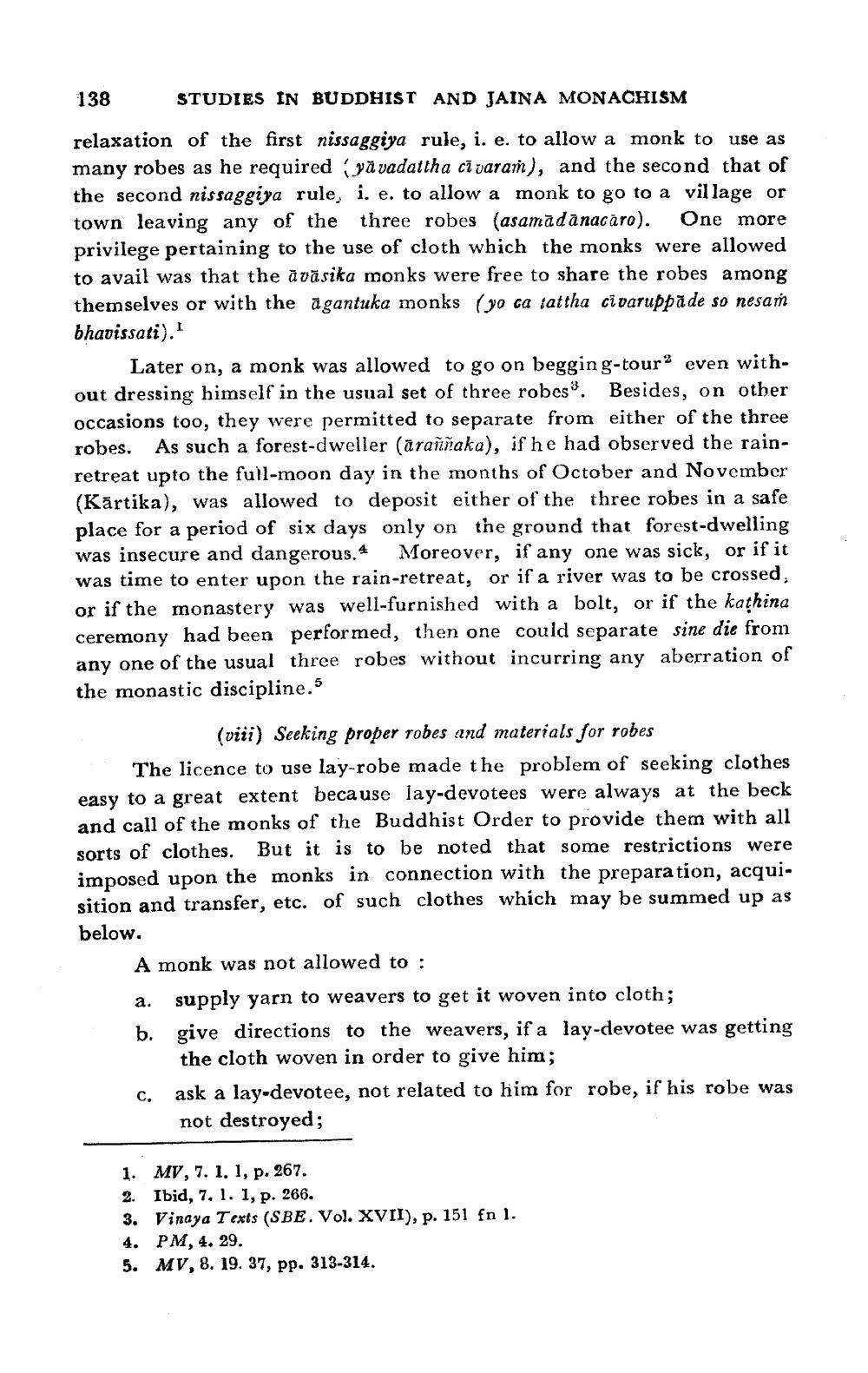________________
138
STUDIES IN BUDDHIST AND JAINA MONACHISM
relaxation of the first nissaggiya rule, i. e. to allow a monk to use as many robes as he required yā vadattha cī varam), and the second that of the second nissaggiya rule, i. e. to allow a monk to go to a village or town leaving any of the three robes (asamadānacäro). One more privilege pertaining to the use of cloth which the monks were allowed to avail was that the āvāsika monks were free to share the robes among themselves or with the ūgantuka monks (yo ca iattha civaruppade so nesam bhavissati).
Later on, a monk was allowed to go on begging-tour even without dressing himself in the usual set of three robes. Besides, on other occasions too, they were permitted to separate from either of the three robes. As such a forest-dweller (araññaka), if he had observed the rainretreat upto the full-moon day in the months of October and November (Kārtika), was allowed to deposit either of the three robes in a safe place for a period of six days only on the ground that forest-dwelling was insecure and dangerous. Moreover, if any one was sick, or if it was time to enter upon the rain-retreat, or if a river was to be crossed, or if the monastery was well-furnished with a bolt, or if the kathina ceremony had been performed, then one could separate sine die from any one of the usual three robes without incurring any aberration of the monastic discipline.s
(viii) Seeking proper robes and materials for robes The licence to use lay-robe made the problem of seeking clothes easy to a great extent because lay-devotees were always at the beck and call of the monks of the Buddhist Order to provide them with all sorts of clothes. But it is to be noted that some restrictions were imposed upon the monks in connection with the preparation, acquisition and transfer, etc. of such clothes which may be summed up as below.
A monk was not allowed to : a. supply yarn to weavers to get it woven into cloth; b. give directions to the weavers, if a lay-devotee was getting
the cloth woven in order to give him; ask a lay-devotee, not related to him for robe, if his robe was not destroyed;
1. MV, 7. 1. 1, p. 267. 2. Ibid, 7, 1. 1, p. 266. 3. Vinaya Texts (SBE. Vol. XVII), p. 151 fn l. 4. PM, 4. 29. 5. MV, 8. 19. 37, pp. 313-314.




